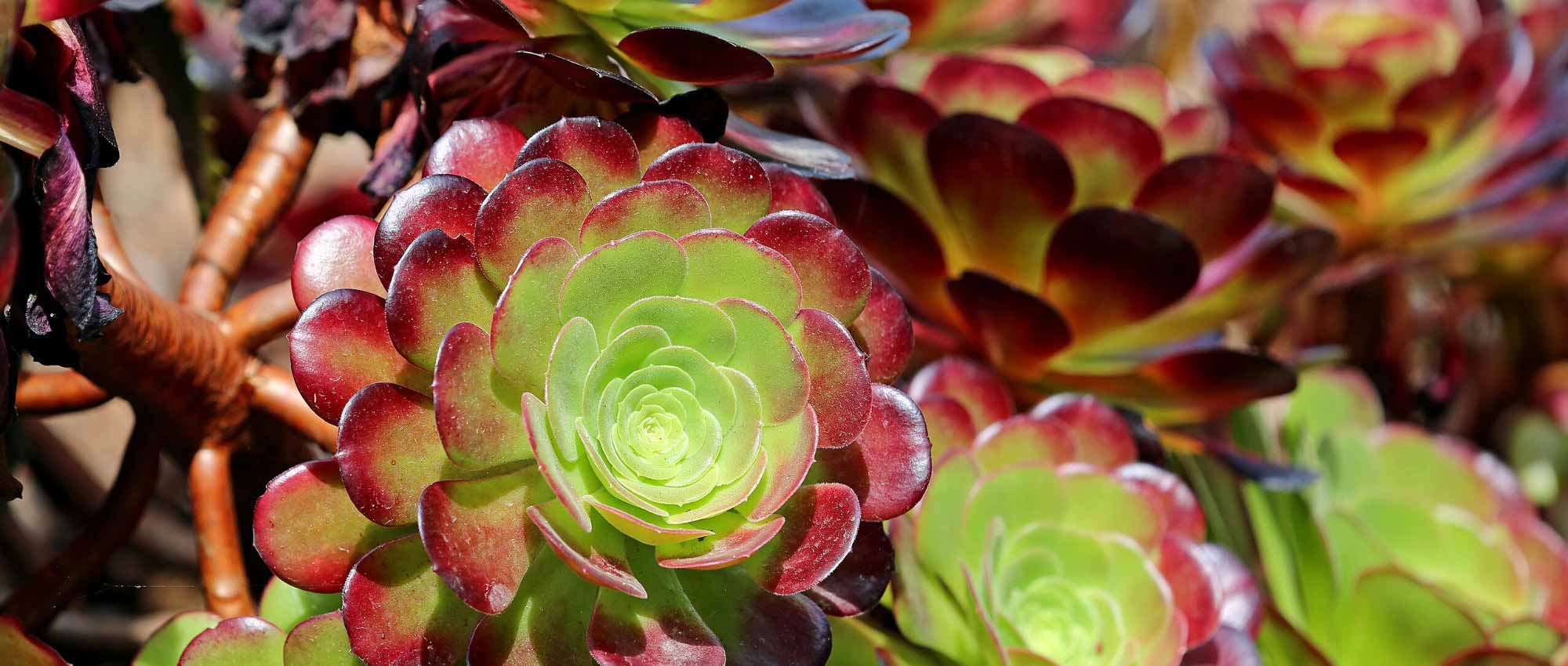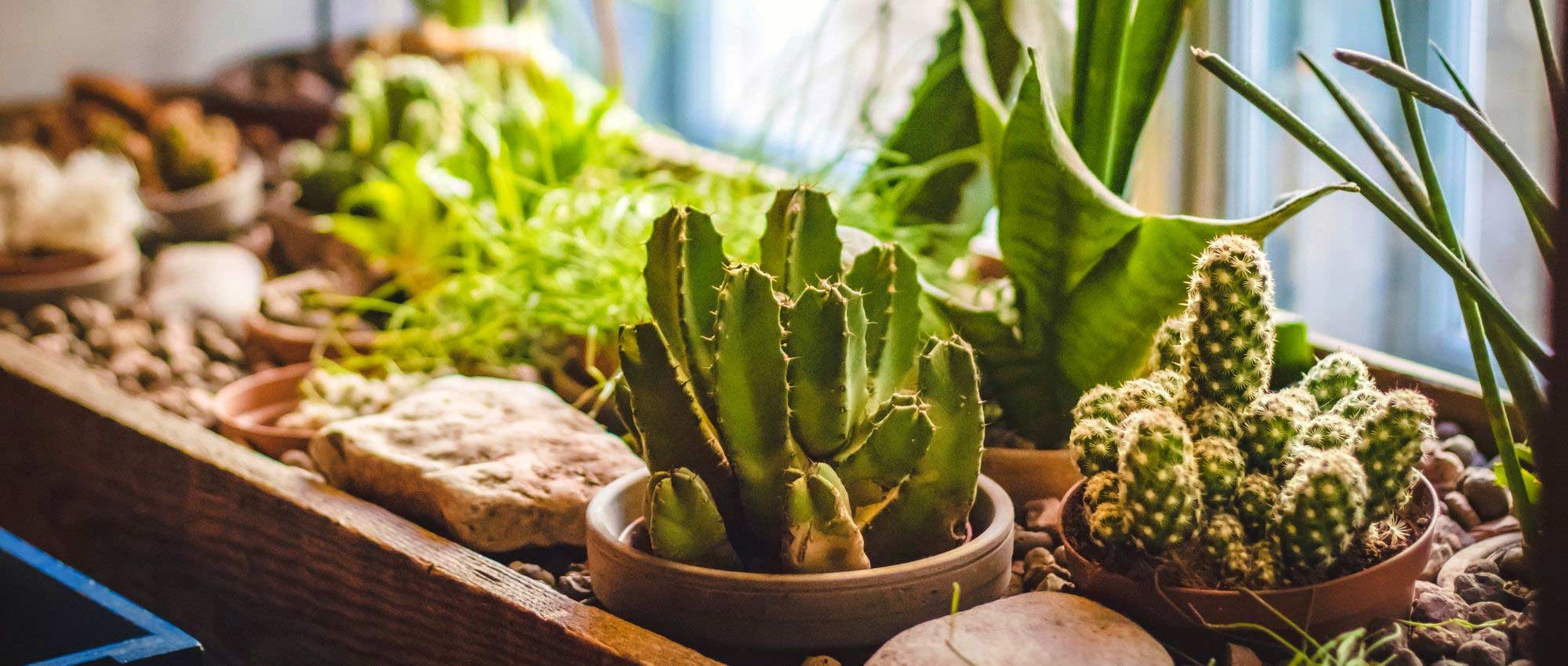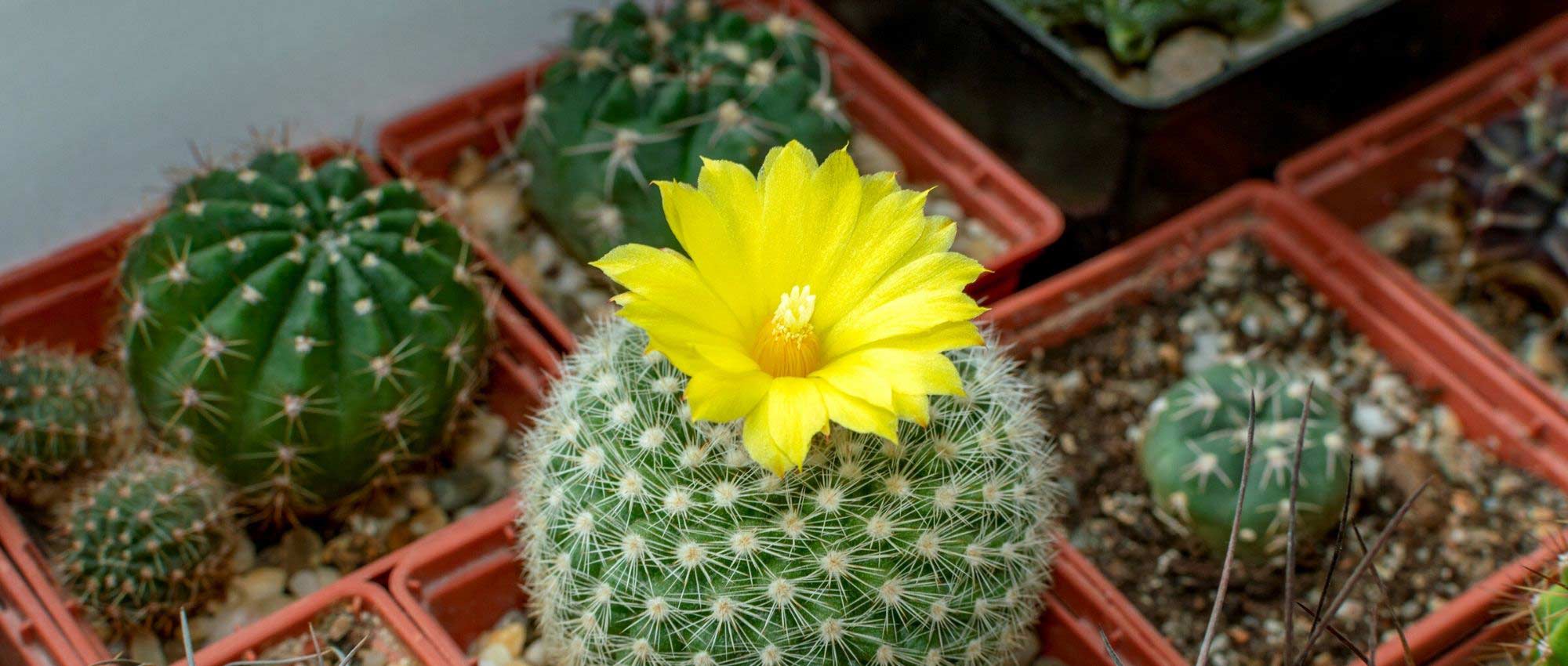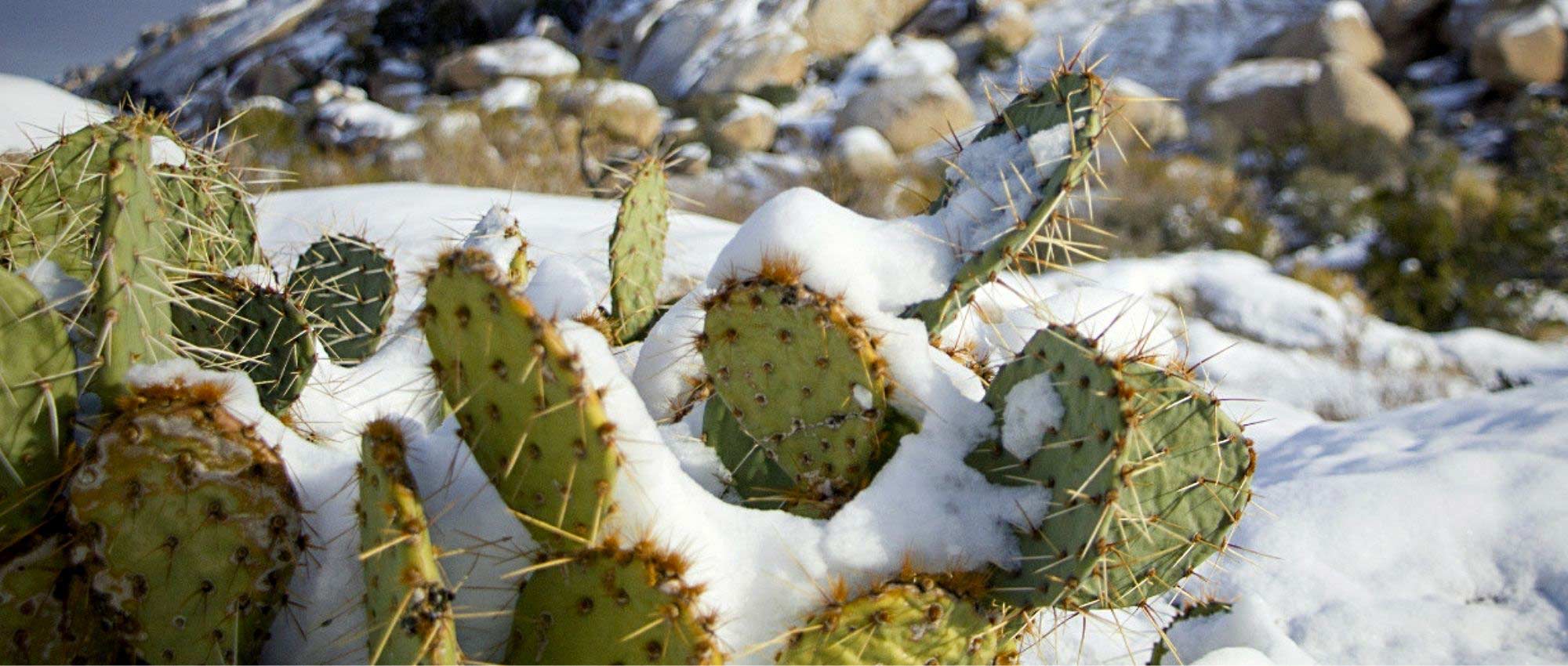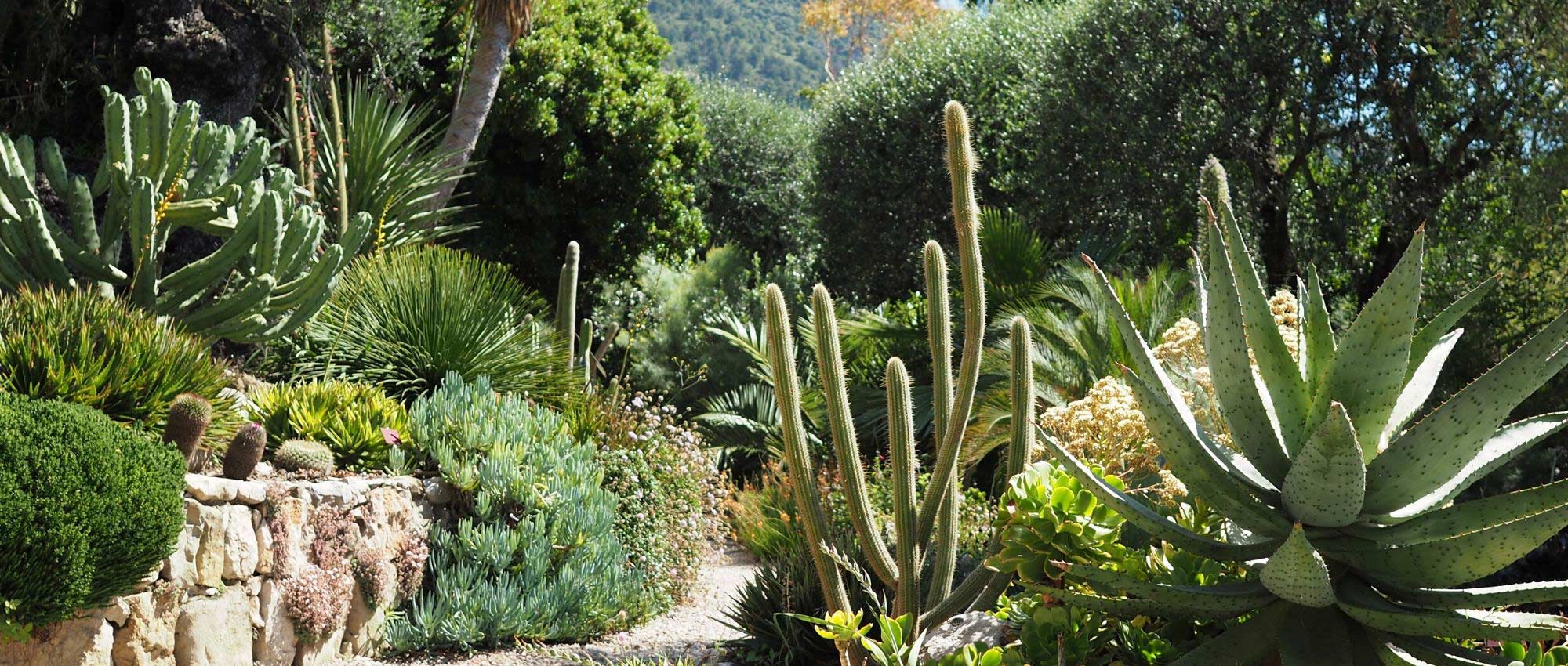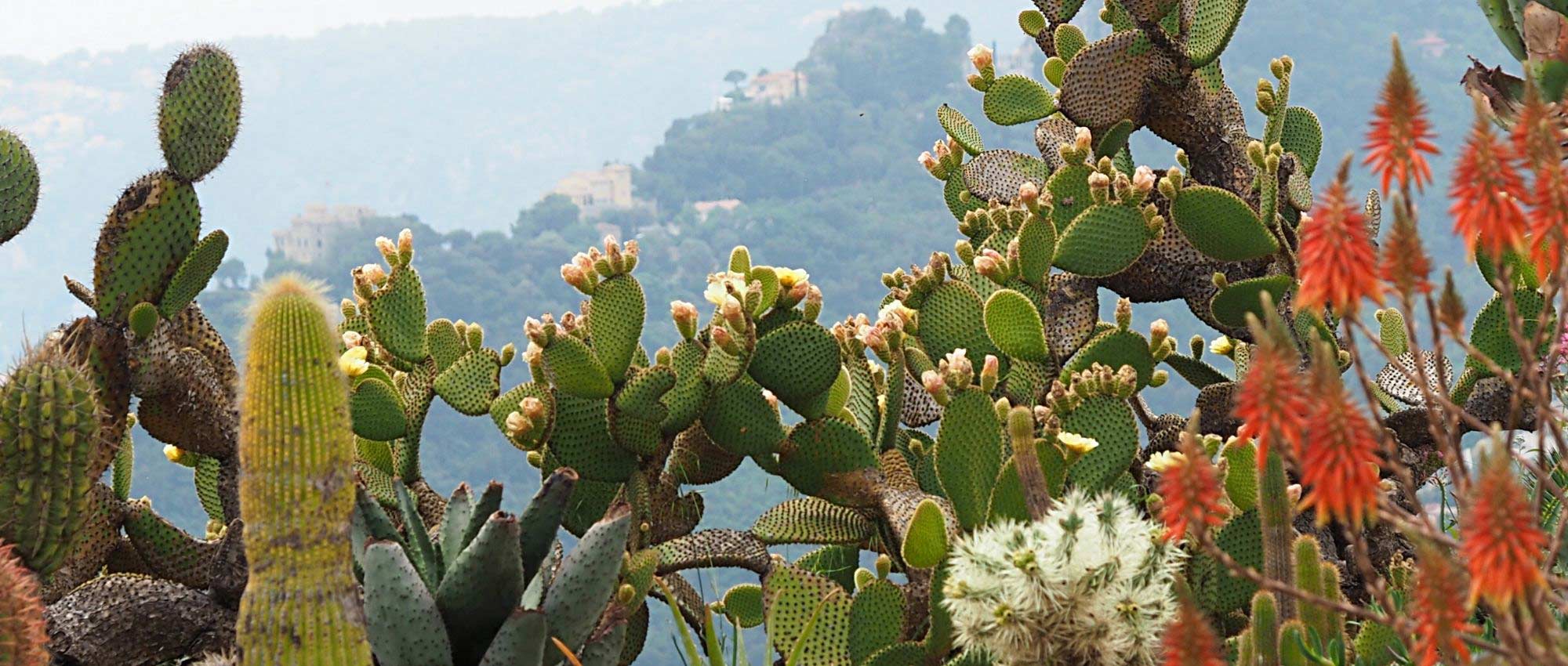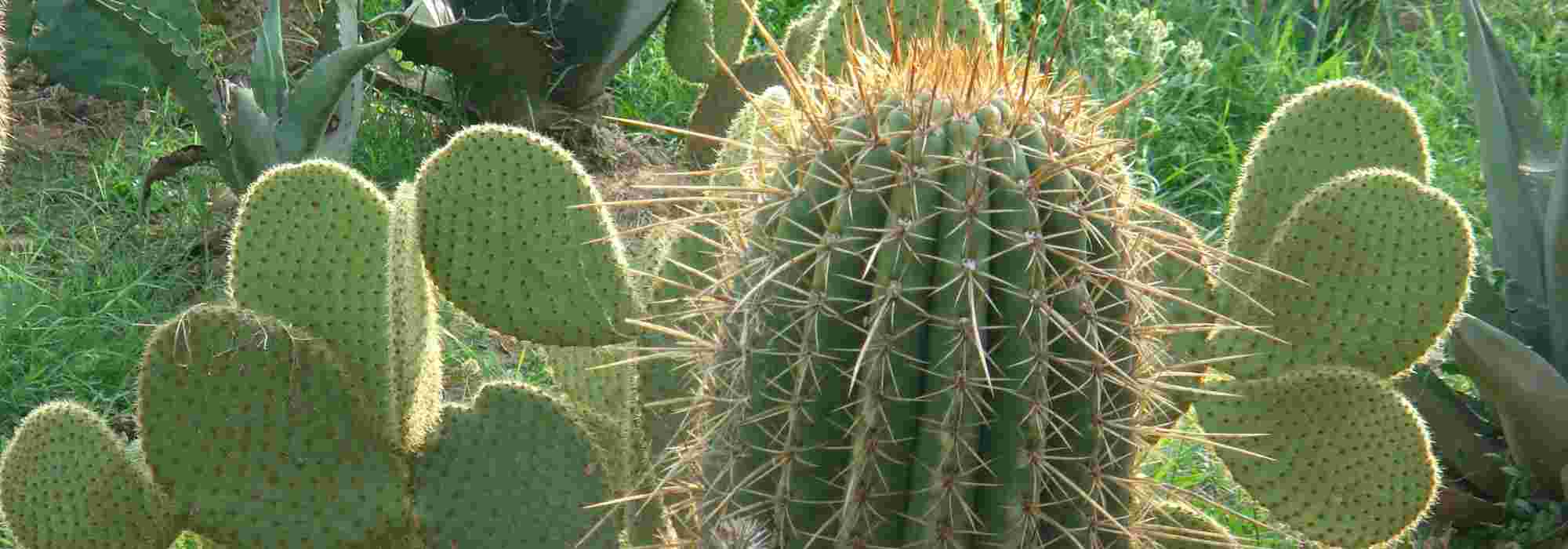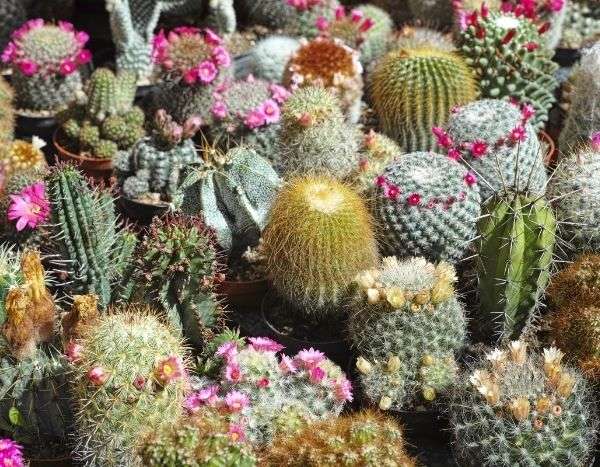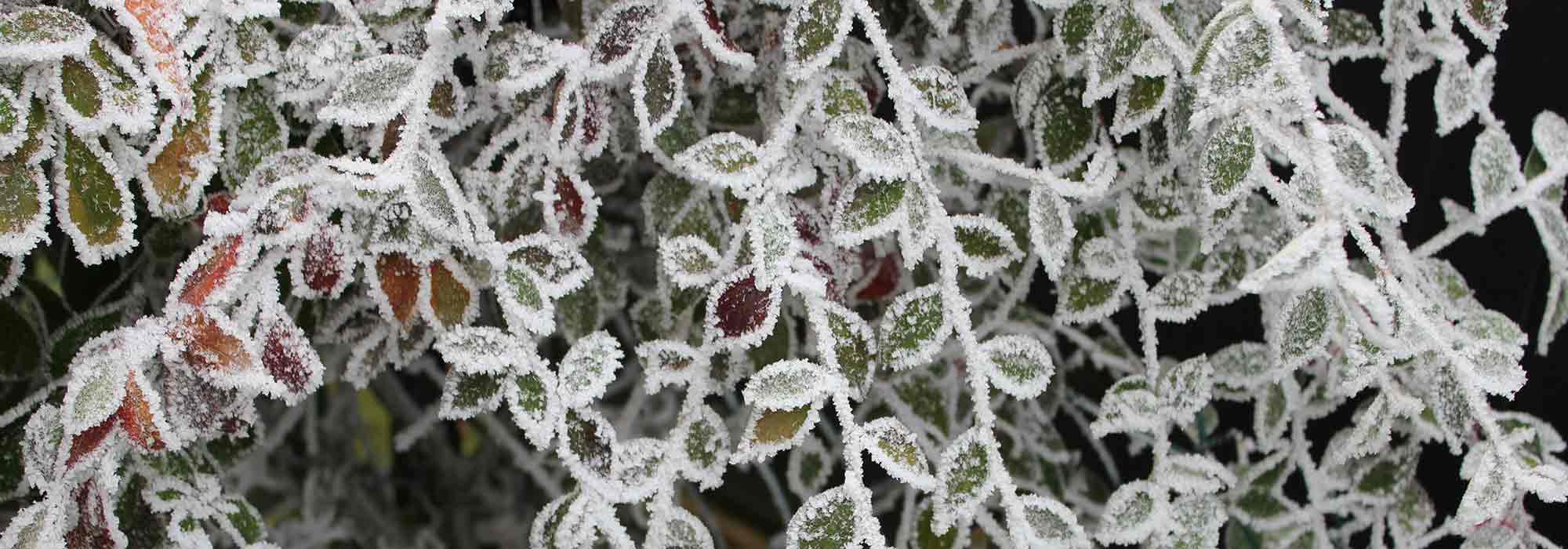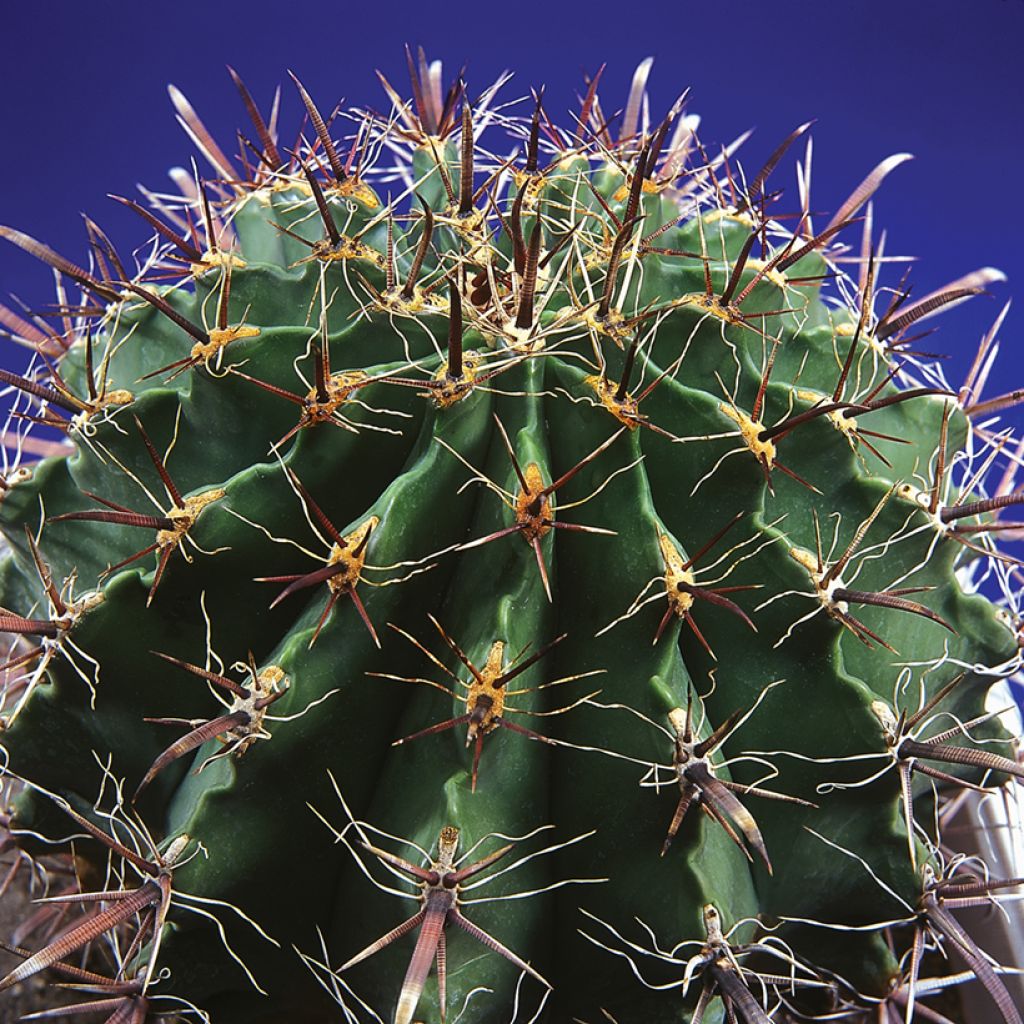

Ferocactus horridus - Barrel cactus
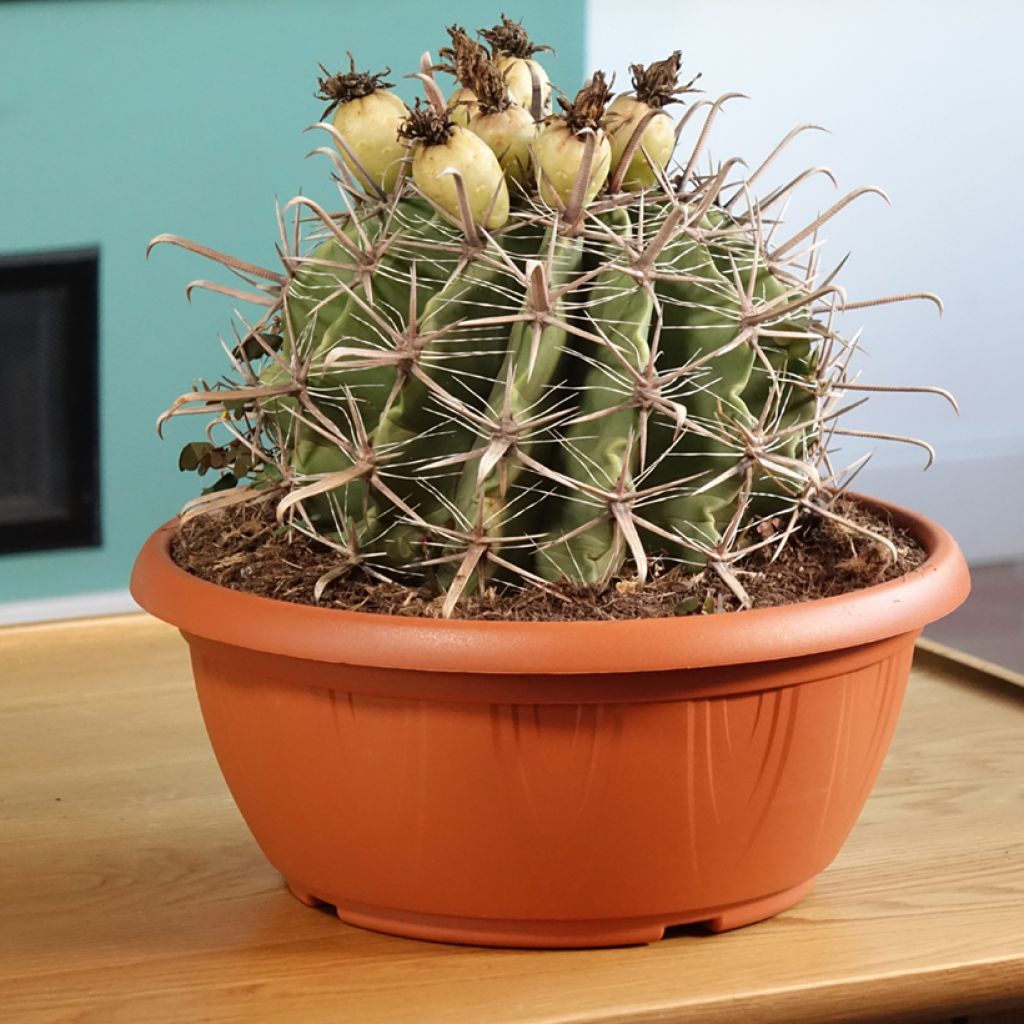

Ferocactus horridus - Barrel cactus
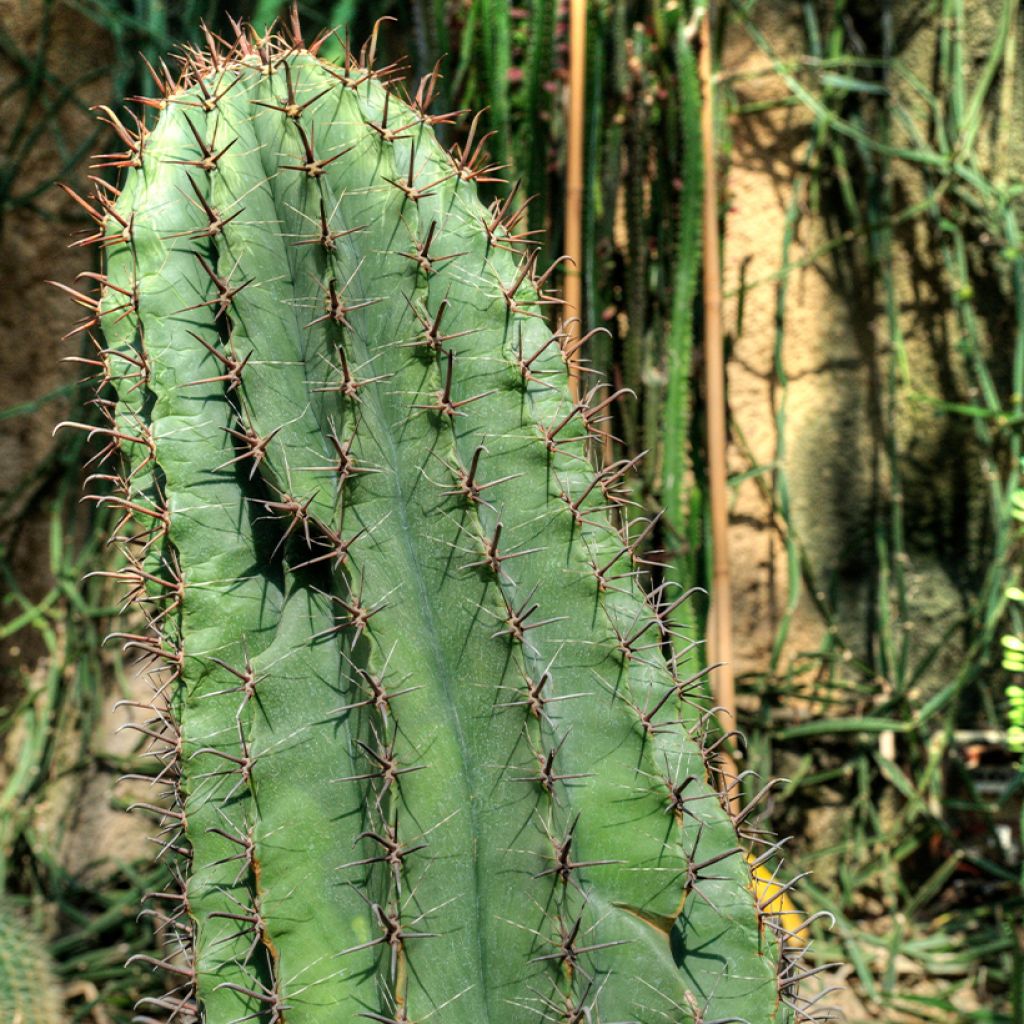

Ferocactus horridus - Barrel cactus
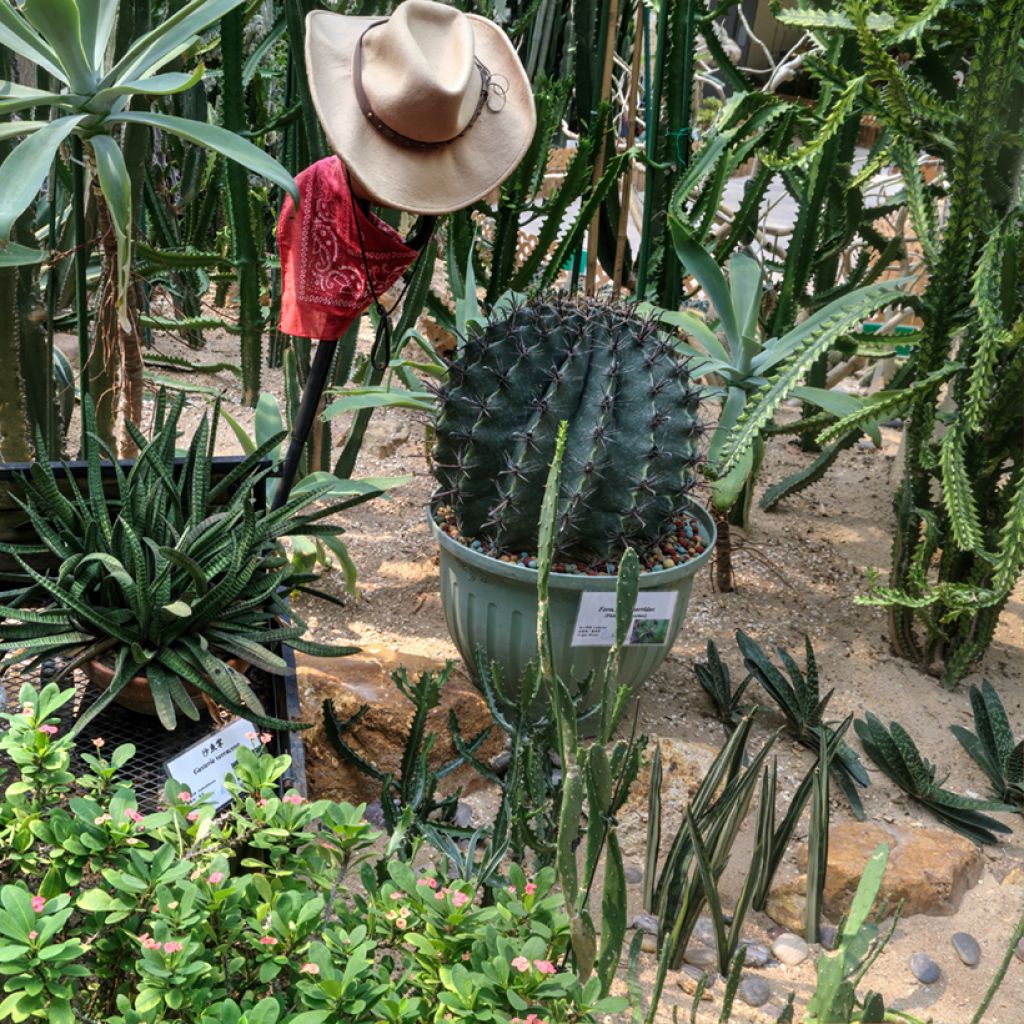

Ferocactus horridus - Barrel cactus
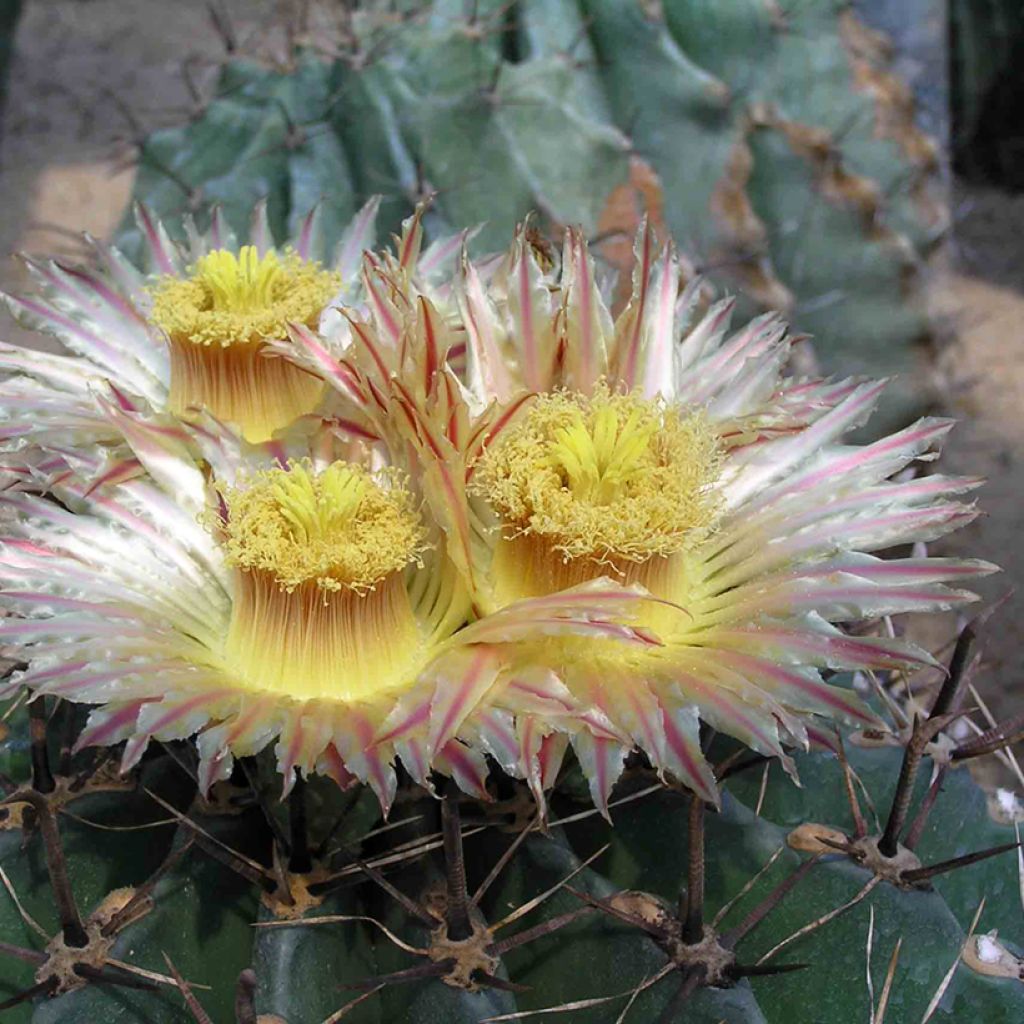

Ferocactus horridus - Barrel cactus
Ferocactus horridus - Barrel cactus
Ferocactus horridus
Barrel cactus
Special offer!
Receive a €20 voucher for any order over €90 (excluding delivery costs, credit notes, and plastic-free options)!
1- Add your favorite plants to your cart.
2- Once you have reached €90, confirm your order (you can even choose the delivery date!).
3- As soon as your order is shipped, you will receive an email containing your voucher code, valid for 3 months (90 days).
Your voucher is unique and can only be used once, for any order with a minimum value of €20, excluding delivery costs.
Can be combined with other current offers, non-divisible and non-refundable.
Home or relay delivery (depending on size and destination)
Schedule delivery date,
and select date in basket
This plant carries a 12 months recovery warranty
More information
We guarantee the quality of our plants for a full growing cycle, and will replace at our expense any plant that fails to recover under normal climatic and planting conditions.
Would this plant suit my garden?
Set up your Plantfit profile →
Description
Ferocactus horridus belongs to the group of "barrel cacti". This is an imposing species with a globular habit that becomes cylindrical with age. It is recognisable by its long, curved thorns, ranging from red to dark brown. Native to Mexico, it thrives only in a hot, dry climate, in full sun. This not very hardy cactus can tolerate temperatures down to -4°C when kept dry. It is most often grown in pots, which allows it to be protected from frost in winter.
Ferocactus horridus, belonging to the Cactaceae family, is native to Baja California in Mexico, where it grows on arid, rocky hills. Its current accepted scientific name is Ferocactus peninsulae. This cactus has a stem that is initially globular and becomes cylindrical with age. It can reach up to 2.5 m in height and about 50 cm in diameter when planted in the ground. In cultivation, its growth is slow, and potted specimens rarely exceed 1 m in height. It generally does not produce offsets, maintaining a solitary habit. Its flowers, appearing at the top of the plant in summer, are yellow with red edges and measure 4-5 cm long. Flowering usually occurs when the plant reaches a diameter of 15 to 18 cm, but it is rare indoors. The lemon-yellow fruits ripen after flowering. The sturdy and curved thorns range from red to dark brown and may lighten with age. The stem is dark green with well-defined ribs. The root system consists mainly of shallow fibrous roots adapted to arid conditions. In its natural habitat, this barrel cactus is sometimes used by local wildlife as a source of water during droughts, with animals consuming its succulent tissues for hydration.
In an arid coastal garden or on a sunny terrace, Ferocactus horridus stands out as a living sculpture. In a rock garden, it will be enhanced by the pink, airy flowering of a Muhlenbergia capillaris. In a pot, it makes an excellent choice for a Mediterranean terrace, paired with a Mangave 'Bloodspot', with rosettes speckled in red, and an upright-stemmed Euphorbia resinifera to add rhythm to the composition.
Ferocactus horridus - Barrel cactus in pictures


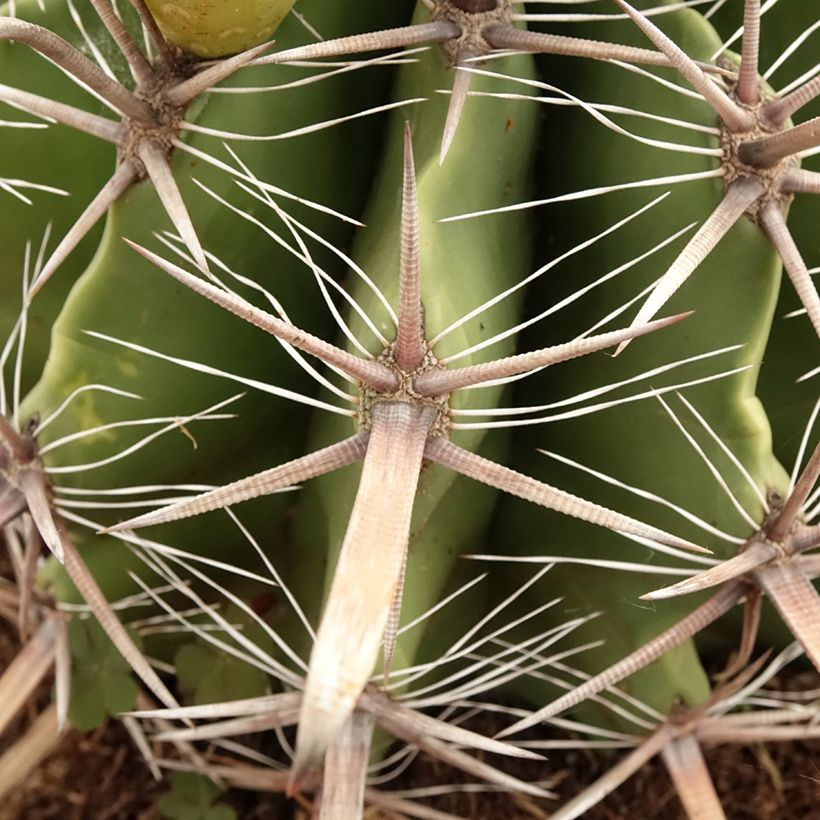



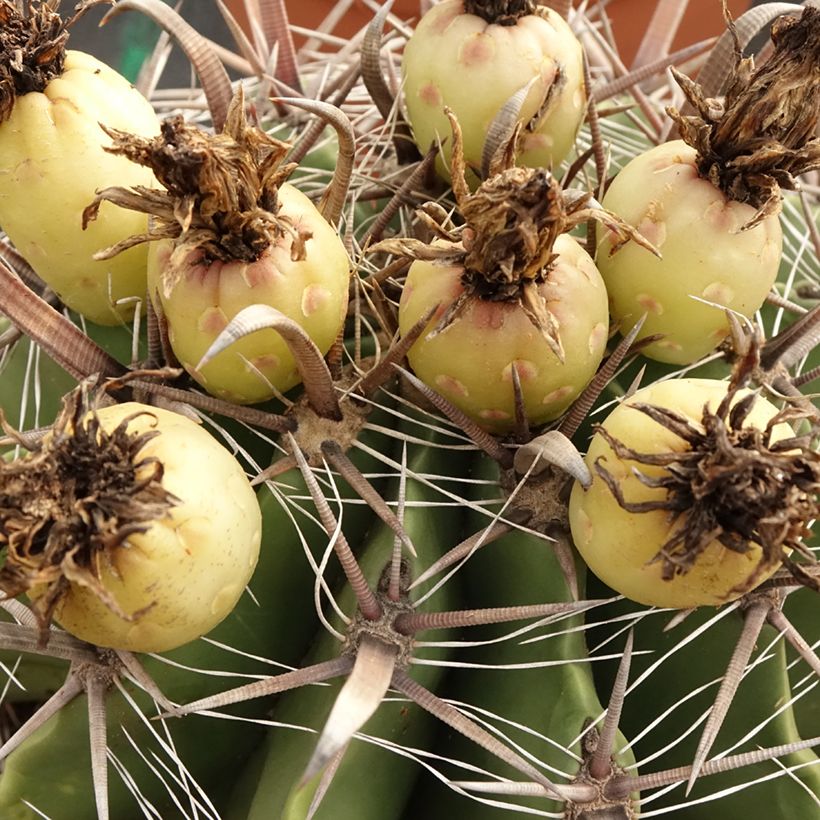

Flowering
Foliage
Plant habit
Botanical data
Ferocactus
horridus
Cactaceae
Barrel cactus
Ferocactus peninsulae, Echinocactus peninsulae
North America
Planting and care
Plant Ferocactus horridus in a pot in April or directly in the soil in May, in full sun, only in a frost-free Mediterranean garden. This cactus struggles with temperatures below -4°C but tolerates drought perfectly, especially in an arid rockery. Above all, it dislikes excess moisture and poorly drained soil. In a pot, choose a very free-draining substrate made of compost, sand, or pumice, with a bit of garden soil, and add a drainage layer at the bottom of the container. Water moderately in summer, then keep the plant dry and cool in winter, in a bright space sheltered from the cold.
Planting period
Intended location
Care
Planting & care advice
This item has not been reviewed yet - be the first to leave a review about it.
Haven't found what you were looking for?
Hardiness is the lowest winter temperature a plant can endure without suffering serious damage or even dying. However, hardiness is affected by location (a sheltered area, such as a patio), protection (winter cover) and soil type (hardiness is improved by well-drained soil).

Photo Sharing Terms & Conditions
In order to encourage gardeners to interact and share their experiences, Promesse de fleurs offers various media enabling content to be uploaded onto its Site - in particular via the ‘Photo sharing’ module.
The User agrees to refrain from:
- Posting any content that is illegal, prejudicial, insulting, racist, inciteful to hatred, revisionist, contrary to public decency, that infringes on privacy or on the privacy rights of third parties, in particular the publicity rights of persons and goods, intellectual property rights, or the right to privacy.
- Submitting content on behalf of a third party;
- Impersonate the identity of a third party and/or publish any personal information about a third party;
In general, the User undertakes to refrain from any unethical behaviour.
All Content (in particular text, comments, files, images, photos, videos, creative works, etc.), which may be subject to property or intellectual property rights, image or other private rights, shall remain the property of the User, subject to the limited rights granted by the terms of the licence granted by Promesse de fleurs as stated below. Users are at liberty to publish or not to publish such Content on the Site, notably via the ‘Photo Sharing’ facility, and accept that this Content shall be made public and freely accessible, notably on the Internet.
Users further acknowledge, undertake to have ,and guarantee that they hold all necessary rights and permissions to publish such material on the Site, in particular with regard to the legislation in force pertaining to any privacy, property, intellectual property, image, or contractual rights, or rights of any other nature. By publishing such Content on the Site, Users acknowledge accepting full liability as publishers of the Content within the meaning of the law, and grant Promesse de fleurs, free of charge, an inclusive, worldwide licence for the said Content for the entire duration of its publication, including all reproduction, representation, up/downloading, displaying, performing, transmission, and storage rights.
Users also grant permission for their name to be linked to the Content and accept that this link may not always be made available.
By engaging in posting material, Users consent to their Content becoming automatically accessible on the Internet, in particular on other sites and/or blogs and/or web pages of the Promesse de fleurs site, including in particular social pages and the Promesse de fleurs catalogue.
Users may secure the removal of entrusted content free of charge by issuing a simple request via our contact form.
The flowering period indicated on our website applies to countries and regions located in USDA zone 8 (France, the United Kingdom, Ireland, the Netherlands, etc.)
It will vary according to where you live:
- In zones 9 to 10 (Italy, Spain, Greece, etc.), flowering will occur about 2 to 4 weeks earlier.
- In zones 6 to 7 (Germany, Poland, Slovenia, and lower mountainous regions), flowering will be delayed by 2 to 3 weeks.
- In zone 5 (Central Europe, Scandinavia), blooming will be delayed by 3 to 5 weeks.
In temperate climates, pruning of spring-flowering shrubs (forsythia, spireas, etc.) should be done just after flowering.
Pruning of summer-flowering shrubs (Indian Lilac, Perovskia, etc.) can be done in winter or spring.
In cold regions as well as with frost-sensitive plants, avoid pruning too early when severe frosts may still occur.
The planting period indicated on our website applies to countries and regions located in USDA zone 8 (France, United Kingdom, Ireland, Netherlands).
It will vary according to where you live:
- In Mediterranean zones (Marseille, Madrid, Milan, etc.), autumn and winter are the best planting periods.
- In continental zones (Strasbourg, Munich, Vienna, etc.), delay planting by 2 to 3 weeks in spring and bring it forward by 2 to 4 weeks in autumn.
- In mountainous regions (the Alps, Pyrenees, Carpathians, etc.), it is best to plant in late spring (May-June) or late summer (August-September).
The harvesting period indicated on our website applies to countries and regions in USDA zone 8 (France, England, Ireland, the Netherlands).
In colder areas (Scandinavia, Poland, Austria...) fruit and vegetable harvests are likely to be delayed by 3-4 weeks.
In warmer areas (Italy, Spain, Greece, etc.), harvesting will probably take place earlier, depending on weather conditions.
The sowing periods indicated on our website apply to countries and regions within USDA Zone 8 (France, UK, Ireland, Netherlands).
In colder areas (Scandinavia, Poland, Austria...), delay any outdoor sowing by 3-4 weeks, or sow under glass.
In warmer climes (Italy, Spain, Greece, etc.), bring outdoor sowing forward by a few weeks.


































